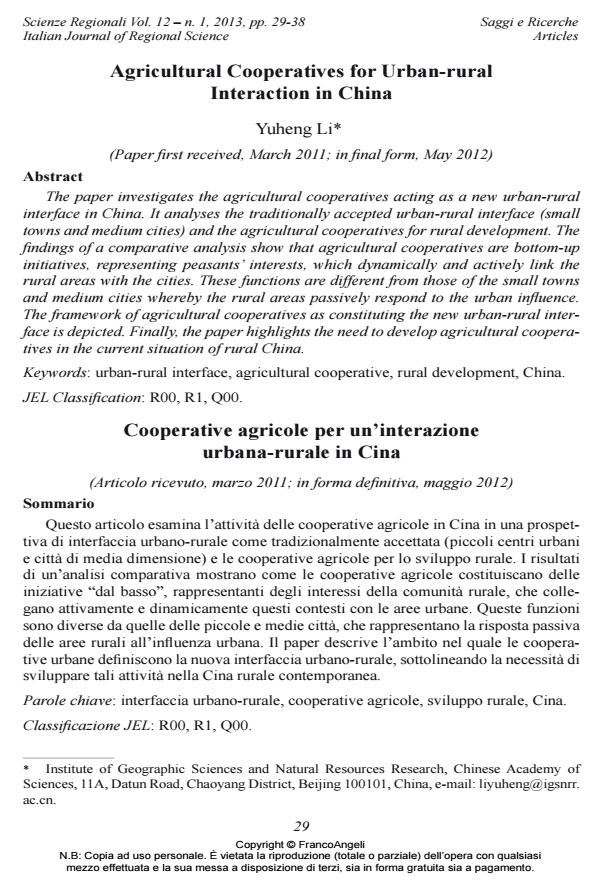Agricultural Cooperatives for Urban-rural Interaction in China
Journal title SCIENZE REGIONALI
Author/s Yuheng Li
Publishing Year 2013 Issue 2013/1
Language English Pages 9 P. 29-37 File size 176 KB
DOI 10.3280/SCRE2013-001002
DOI is like a bar code for intellectual property: to have more infomation
click here
Below, you can see the article first page
If you want to buy this article in PDF format, you can do it, following the instructions to buy download credits

FrancoAngeli is member of Publishers International Linking Association, Inc (PILA), a not-for-profit association which run the CrossRef service enabling links to and from online scholarly content.
The paper investigates the agricultural cooperatives acting as a new urban-rural interface in China. It analyses the traditionally accepted urban-rural interface (small towns and medium cities) and the agricultural cooperatives for rural development. The findings of a comparative analysis show that agricultural cooperatives are bottom-up initiatives, representing peasants’ interests, which dynamically and actively link the rural areas with the cities. These functions are different from those of the small towns and medium cities whereby the rural areas passively respond to the urban influence. The framework of agricultural cooperatives as constituting the new urban-rural interface is depicted. Finally, the paper highlights the need to develop agricultural cooperatives in the current situation of rural China.
Keywords: Urban-rural interface, agricultural cooperative, rural development, China.
Jel codes: R00, R1, Q00.
- Transforming the Loess Plateau of China Yuheng LI, Guoming DU, Yansui LIU, in Frontiers of Agricultural Science and Engineering /2016 pp.181
DOI: 10.15302/J-FASE-2016110 - How does nonfarm employment stability influence farmers' farmland transfer decisions? Implications for China’s land use policy Baozhong Su, Yuheng Li, Lequn Li, Yue Wang, in Land Use Policy /2018 pp.66
DOI: 10.1016/j.landusepol.2017.09.053 - UNCERTAINTY IN THE RICE SUPPLY CHAIN DURING PRE AND POST PANDEMIC - A CROSS CASE OF AGRICULTURAL COOPERATIVES IN INDONESIA Rosyadi Rosyadi, Adi Wijaya, in Agrisocionomics: Jurnal Sosial Ekonomi Pertanian /2024 pp.260
DOI: 10.14710/agrisocionomics.v8i1.18713
Yuheng Li, Agricultural Cooperatives for Urban-rural Interaction in China in "SCIENZE REGIONALI " 1/2013, pp 29-37, DOI: 10.3280/SCRE2013-001002